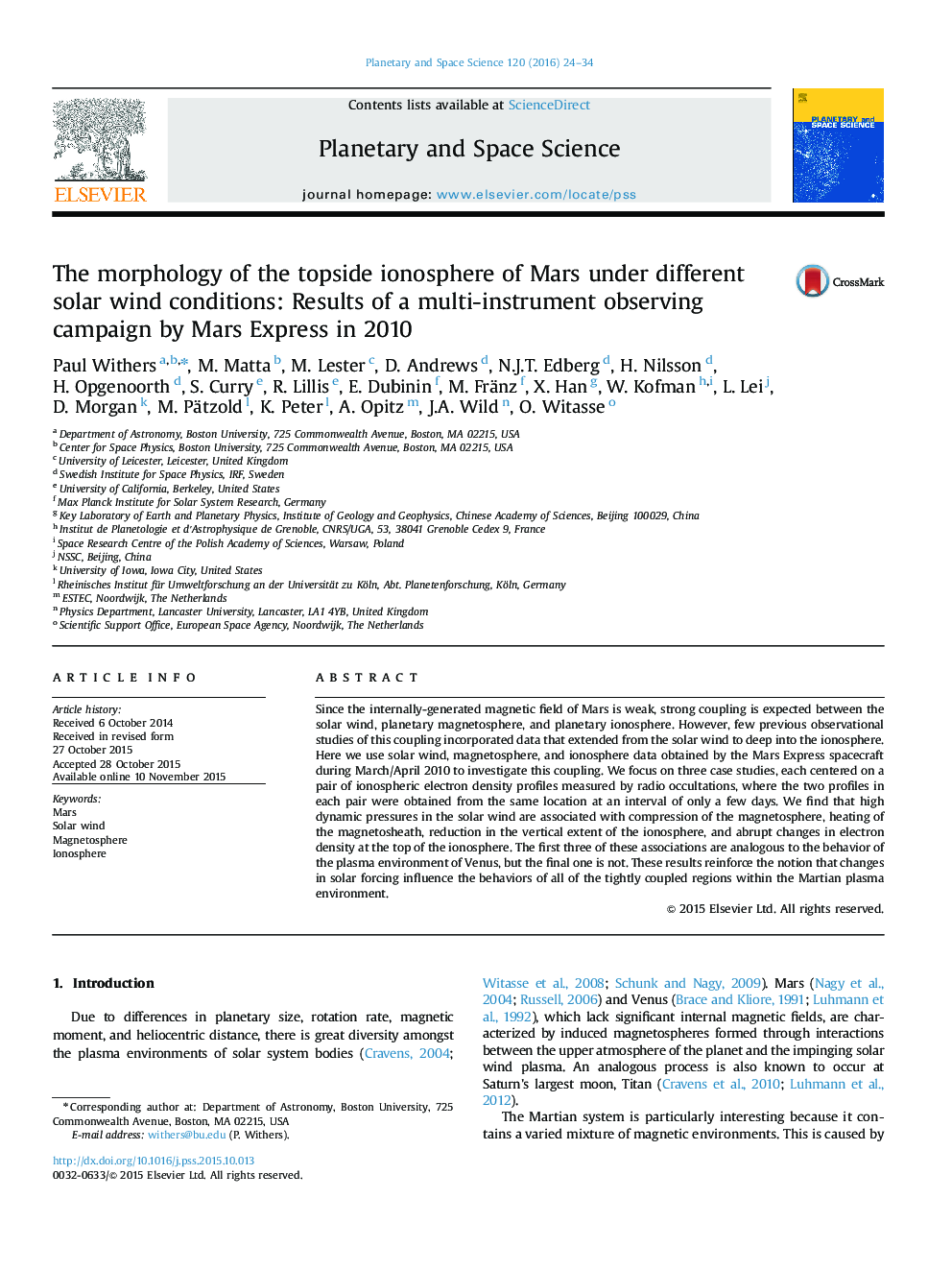| Article ID | Journal | Published Year | Pages | File Type |
|---|---|---|---|---|
| 8142866 | Planetary and Space Science | 2016 | 11 Pages |
Abstract
Since the internally-generated magnetic field of Mars is weak, strong coupling is expected between the solar wind, planetary magnetosphere, and planetary ionosphere. However, few previous observational studies of this coupling incorporated data that extended from the solar wind to deep into the ionosphere. Here we use solar wind, magnetosphere, and ionosphere data obtained by the Mars Express spacecraft during March/April 2010 to investigate this coupling. We focus on three case studies, each centered on a pair of ionospheric electron density profiles measured by radio occultations, where the two profiles in each pair were obtained from the same location at an interval of only a few days. We find that high dynamic pressures in the solar wind are associated with compression of the magnetosphere, heating of the magnetosheath, reduction in the vertical extent of the ionosphere, and abrupt changes in electron density at the top of the ionosphere. The first three of these associations are analogous to the behavior of the plasma environment of Venus, but the final one is not. These results reinforce the notion that changes in solar forcing influence the behaviors of all of the tightly coupled regions within the Martian plasma environment.
Related Topics
Physical Sciences and Engineering
Earth and Planetary Sciences
Geophysics
Authors
Paul Withers, M. Matta, M. Lester, D. Andrews, N.J.T. Edberg, H. Nilsson, H. Opgenoorth, S. Curry, R. Lillis, E. Dubinin, M. Fränz, X. Han, W. Kofman, L. Lei, D. Morgan, M. Pätzold, K. Peter, A. Opitz, O. Witasse,
